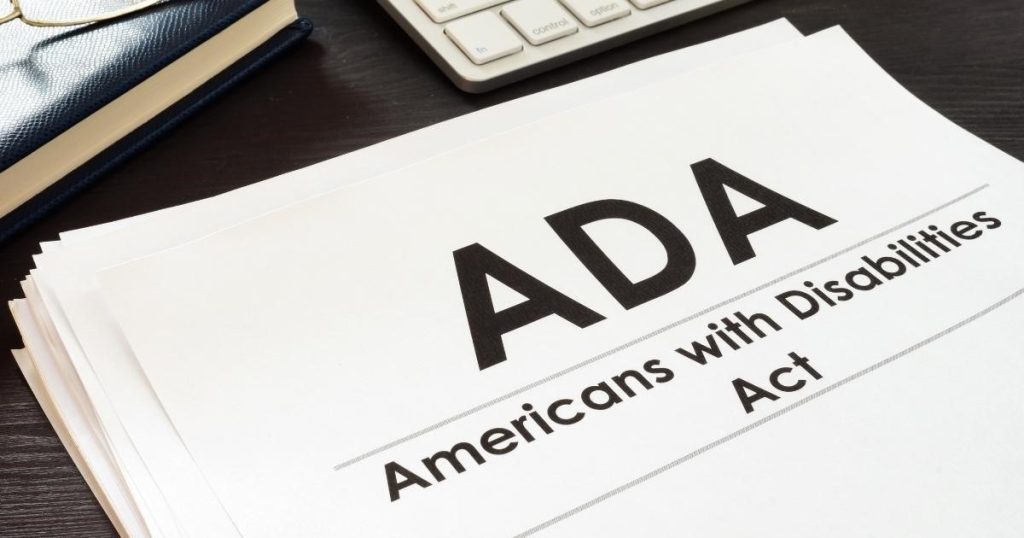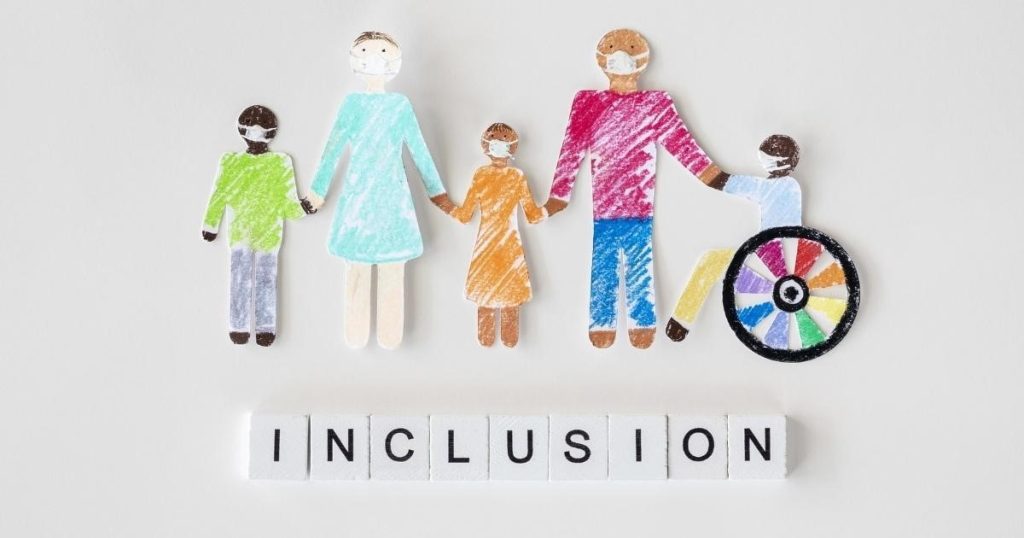Website accessibility lawsuits are on the rise. Despite society’s continued advancements, many businesses and organizations have yet to comply with the requirements of the ADA, leading to an increasing number of website accessibility lawsuits. While these suits can be costly and time-consuming to defend, they are also a reminder that all businesses must ensure their websites are accessible to everyone. Let’s take a closer look at why website accessibility is so important and what you can do to ensure your site is compliant.
What’s the ADA?
The Americans with Disabilities Act, or ADA, was passed in 1990 and prohibits discrimination against people with disabilities in all areas of public life, including workplaces, schools, transportation, and government buildings. The law also requires that businesses and other organizations take steps to ensure that people with disabilities have equal access to their services and facilities. In the years since the ADA was passed, it has also been interpreted to include websites. This means that all public-facing websites must be accessible to people with disabilities. This includes features such as text that can be resized without losing content, alt text for images, and transcripts for audio and video content. Making a website accessible benefits people with disabilities and makes it more user-friendly for everyone. By complying with the ADA’s standards, businesses can ensure that their websites are accessible to the widest possible audience.

Who does the ADA protect?
The ADA protects people with a wide range of disabilities, including those who have:
- Visual Impairments
- Hearing Impairments
- Physical Disabilities
- Cognitive Disabilities
- And More
To be protected by the ADA, a person must have a disability that limits their ability to participate in one or more major life activities. This can include walking, talking, breathing, caring for oneself, and working. Additionally, a person must have a record of such a disability or be regarded as having such a disability. Thus, anyone who wants to make an accessible website that is also very good in assistive technology must follow all these guidelines.
What are the penalties for non-compliance?
The penalties for violating the ADA’s accessibility requirements can be significant. Businesses that are found to violate the ADA can be required to pay damages to the complainant, as well as their attorney’s fees. In some cases, businesses may also be required to change their website or take other measures to ensure compliance.

What can you do to make sure your website is accessible?
You can take several steps to ensure your website is accessible to everyone. The web content accessibility guidelines (online accessibility act) include:
- Use Clear And Concise Language
- Avoiding Too Much Jargon
- Use Easy To Read Font Sizes
- Providing Alt Text For All Images
- Ensuring Audio And Video Content Is Captioned
- And More
Making your website accessible doesn’t have to be complicated or time-consuming. By taking a few simple steps, you can ensure that your site is compliant with the ADA and accessible to everyone.
The ADA also applies to mobile apps, and these website accessibility laws will also catch those who don’ comply with mobile app accessibility guidelines. Hence, ADA lawsuits and website accessibility laws are crucial when making a new website.

Does this mean websites have to be 100% accessible?
The Americans with Disabilities Act (ADA) applies to digital spaces, requiring that websites and other online content be accessible to people with vision, hearing, and mobility impairments. However, the law does not mandate that all websites be 100% accessible. Rather, website owners must make a good faith effort to ensure that their sites are accessible to as many people as possible. As long as website owners are taking steps to improve accessibility, they generally comply with the ADA.
Unless and until the DOJ sets forth clear guidance on what makes a website accessible or not, courts will have no choice but to review each case on the facts presented
The Americans with Disabilities Act (ADA) has been increasingly applied to websites, with the courts holding that sites that are not accessible to individuals with disabilities are discriminating against them in violation of the law. However, the Department of Justice (DOJ), which is responsible for enforcing the ADA, has yet to issue any clear guidance on what makes a website accessible or not. As a result, courts have had to evaluate each case on its own merits, resulting in a patchwork of inconsistent decisions. Until the DOJ provides clear guidance on this issue, courts will struggle to reach a uniform standard. This lack of clarity is bad for businesses and individuals with disabilities and creates a risk of costly litigation.
What does the Department of Justice say about web compliance with the ADA?
Earlier this year, the U.S DOJ has released guidance on web accessibility and the Americans with Disabilities Act (ADA). The guidance provides covered entities with flexibility in compliance while highlighting common barriers and potential solutions.
The DOJ’s guidance is divided into three sections: an overview of the ADA, a discussion of common web accessibility issues, and suggested solutions for covered entities.
In the overview section, the DOJ emphasizes that the ADA applies to all aspects of daily life, including activities that take place online. The guidance then discusses some of the most common accessibility issues covered entities may encounter when developing or maintaining their websites. These include insufficient color contrast, lack of text alternatives for non-text content, and insufficient captioning for video content. Finally, the guidance provides suggested solutions for each of these issues. For example, the DOJ suggests that covered entities use contrasting colors for text and background colors, provide text alternatives for non-text content, and ensure that all videos are properly captioned.

Recently, there has been an uptick in web accessibility lawsuits that are filed in courts around the US
The lawsuit for accessibility issues increased by 14% from 2020 to 2021. There were 372 more cases registered in 2021, and the total number was up to 2895.
Comparing it to 2017 and 2018 data would imply that a 177% increase in these types of lawsuits has happened to date. It’s a major concern among people with disabilities who want to use the internet for good.
Several factors may be driving this trend. First, the pandemic has forced more people with disabilities to rely on online tools and resources, magnifying the importance of website accessibility. Second, the Department of Justice has clarified that it intends to enforce the Americans with Disabilities Act (ADA) more aggressively, particularly regarding website accessibility. Finally, plaintiffs’ attorneys have become savvier about using technology to identify potential defendants and have developed creative litigation strategies proving effective in court.
Whatever the reasons for the recent increases, one thing is certain: website accessibility litigation is here to stay. And with the DOJ’s new guidance, businesses and other covered entities should expect even more lawsuits in the years to come.

More than half of the recent web accessibility cases have been against private companies
Over the past few years, there has been an increase in the number of web accessibility lawsuits filed in the United States. More than half of these cases have been against private companies. While the Americans with Disabilities Act (ADA) does not mention web accessibility, the Department of Justice states that the ADA applies to websites. Private companies must ensure that their websites are accessible to people with disabilities.
These websites must be designed and maintained to allow people with disabilities to use them. This includes ensuring the website can be used with assistive technologies like screen readers.
The famous companies that were found not to comply with the ADA are:
1. Amazon: In 2017, the National Federation of the Blind filed a lawsuit against Amazon, alleging that the online retailer’s website was not accessible to blind users. The case is still pending.
2. eBay: In 2016, a federal court ruled that eBay’s website was not accessible to blind users. The company has since made some changes to its website to improve accessibility.
3. Netflix: In 2016, the National Association of the Deaf filed a lawsuit against Netflix, alleging that the streaming service’s website and app were not accessible to deaf users. The case is still pending.
4. Target: In 2015, the National Federation of the Blind filed a lawsuit against Target, alleging that the retailer’s website was not accessible to blind users. Target has since made some changes to its website to improve accessibility.
5. Toys “R” Us: In 2016, a federal court ruled that Toys “R” Us’ website was not accessible to blind users. The company has since made some changes to its website to improve accessibility.
While the Americans with Disabilities Act applies to all websites, a few exceptions exist. The law does not apply to websites that are not publicly accessible, such as those behind a paywall or require a login. In addition, the law does not apply to government websites. However, many state and local governments have laws requiring government websites to be accessible.
A recent study found that over a quarter of top retail websites surveyed were not compliant with web accessibility guidelines
According to a recent study, none of the world’s top 50 websites comply with digital accessibility guidelines. This is troubling, considering that more than one billion people, or 15% of the world’s population, report some form of disability that impacts their ability to navigate a website. The most common accessibility issues include problems with color contrast, text size, and keyboard navigation. These issues can make it difficult or impossible for people with certain disabilities to use a website. In some cases, these accessibility issues can also impact people without disabilities, such as those trying to use a website on a mobile phone. The good news is that many tools and resources are available to help website owners make their sites more accessible. By taking the time to learn about digital accessibility and implementing some simple changes, we can make the web a more inclusive place for everyone.
Frequently Asked Questions (FAQs)
Does my website need to comply with the ADA?
Yes, if your website is publicly accessible and you are a private company.
What does it mean to be ADA compliant on a website?
It means that your website must be accessible to people with disabilities. This includes ensuring the website can be used with assistive technologies like screen readers.
How does ADA relate to web development?
The ADA relates to web development because it requires that all websites be accessible to people with disabilities. This includes ensuring the website can be used with assistive technologies like screen readers.
What is Ada & WCAG Compliance?
ADA compliance means that your website must be accessible to people with disabilities. WCAG compliance is a set of guidelines for making websites accessible.
Takeaway: Your company can get sued for having an inaccessible website, so it is important to take steps to make sure your website complies
Just as brick-and-mortar businesses must ensure their premises are accessible to people with disabilities, so must website owners take steps to ensure their sites are accessible. The Americans with Disabilities Act (ADA) prohibits discrimination based on disability, and this prohibition extends to websites. If your website is not accessible to people with disabilities, you could open your company up to a lawsuit. While it may seem like a daunting task to make your website compliant with the ADA, there are some simple steps you can take to get started. For example, you can add alt text to images so that people who are blind or have low vision can understand what is depicted. You can also provide transcripts for videos and audio content. These measures will help ensure that your website is accessible to everyone, regardless of disability.





